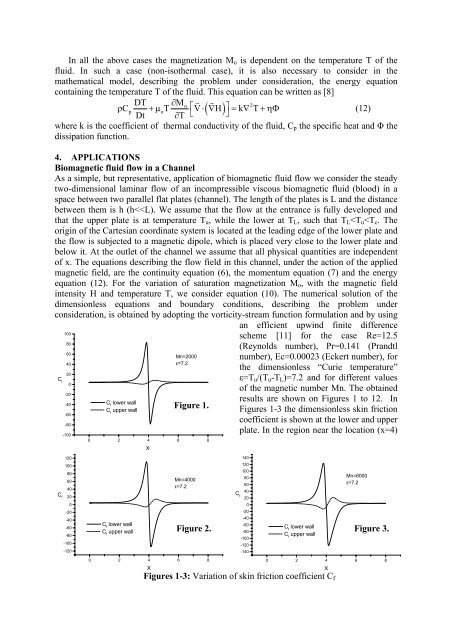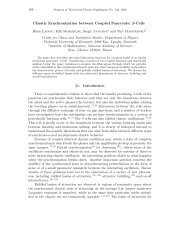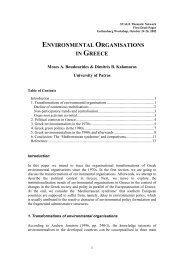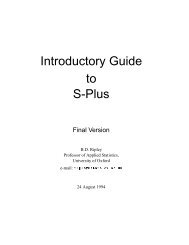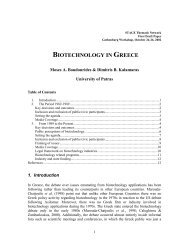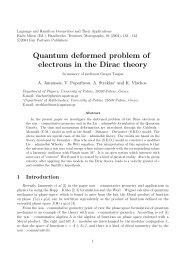mathematical models for biomagnetic fluid flow and applications
mathematical models for biomagnetic fluid flow and applications
mathematical models for biomagnetic fluid flow and applications
Create successful ePaper yourself
Turn your PDF publications into a flip-book with our unique Google optimized e-Paper software.
In all the above cases the magnetization M o is dependent on the temperature T of the<br />
<strong>fluid</strong>. In such a case (non-isothermal case), it is also necessary to consider in the<br />
<strong>mathematical</strong> model, describing the problem under consideration, the energy equation<br />
containing the temperature T of the <strong>fluid</strong>. This equation can be written as [8]<br />
DT ∂M<br />
<br />
o<br />
2<br />
ρ Cp<br />
+µ<br />
oT ⎡V⋅( ∇ H) ⎤ = k∇ T+<br />
ηΦ<br />
(12)<br />
Dt ∂T<br />
⎣ ⎦<br />
where k is the coefficient of thermal conductivity of the <strong>fluid</strong>, C p the specific heat <strong>and</strong> Φ the<br />
dissipation function.<br />
4. APPLICATIONS<br />
Biomagnetic <strong>fluid</strong> <strong>flow</strong> in a Channel<br />
As a simple, but representative, application of <strong>biomagnetic</strong> <strong>fluid</strong> <strong>flow</strong> we consider the steady<br />
two-dimensional laminar <strong>flow</strong> of an incompressible viscous <strong>biomagnetic</strong> <strong>fluid</strong> (blood) in a<br />
space between two parallel flat plates (channel). The length of the plates is L <strong>and</strong> the distance<br />
between them is h (h


